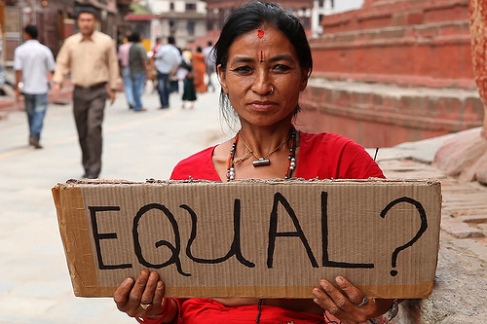I attended the “Marginalized Women: Out of the Margins and Onto the Page” panel for the Graduate Comics Organization on Sunday, March 17th and I learned quite a lot about the history of a super heroine known as Batwoman as well as queer theory in comics. The first speaker, Dianna Baldwin, had a very intriguing argument about the portrayal of the Batwoman character in the DC Comics universe and expanded on her development as well as her back story. Her initial argument of Batwoman’s creation is that she was used to quell rumors that the two renowned heroes of DC Comics, Batman and Robin, were in a homosexual relationship. In fact, Batwoman was used as a potential love interest to Batman and throughout her very few appearances in the late 1950s she was often the one appearing in the nick of time to rescue the caped crusader.
Moreover, Baldwin’s first part of her presentation focused on emphasizing and pointing out the many feminine aspects of the character of Batwoman including her very bright and womanly attire with her long hair flowing in the back, her make-up inspired gadgets, and even some girly phrases that further accentuated the female stereotype she portrayed. In addition, Batwoman’s weapons consist of feminine products such as cosmetic compacts, bracelets, hairnets, and even lipstick that are literally used to attack her opponents. It is also interesting to note that Batwoman always seems to fight against male villains and, in some cases, rescued Batman and Robin from a pickle, most likely displaying a bit of female superiority and equality with a strong superhero like Batman.
Furthermore, Baldwin also included the deterioration of the Batwoman role which included the character giving up her life as a vigilante because a man advised her to stop. In addition, she spoke about how the term “Women in Refrigerator Syndrome” fit so well to Batwoman as she is “depowered” by the masculine figure, Batman in this case, that discovers her secret identity. Batman warns her that she may be in danger considering any villain may discover her identity if he was easily able to uncover it. Baldwin also talks about the “Bechdel Test” used to identify the gender bias in the Batwoman comics. The test usually consists of following rules: the comic should have two or more women, the woman must converse with one another, and they are to talk about something other than men.
The second half of Baldwin’s presentation expands on the Batwoman character over the years as she began appearing less until she completely disappeared from the DC Comics issues. Baldwin asserts that there was really no use for her character and found it difficult to use her. However, in 2006, the Batwoman character returned and had apparently become a lesbian super heroine. In this iteration, she is more independent and strong willed. She no longer fits in with the typical female stereotype and has become a more masculine character that fights crime without the presence of Batman. She has a romantic relationship with another female and her character seems to be completely rewritten to appease a broader audience.
Overall, Baldwin organized her presentation really well and a lot of people were very attentive to her analysis of Batwoman. It was interesting to see the transition from a character that was practically the epitome of the stereotypical female of the Golden Age comics to a tough, independent, and well-rounded super heroine in the 2000s. Her presentation was perfect, in my opinion, and elaborated a lot on a character with a very limited background. Not only did she include the developmental history of Batwoman, but her argument was consistent with the facts she included on her presentation. All in all, this was a very interesting experience and would love to attend another panel like this in the future.






